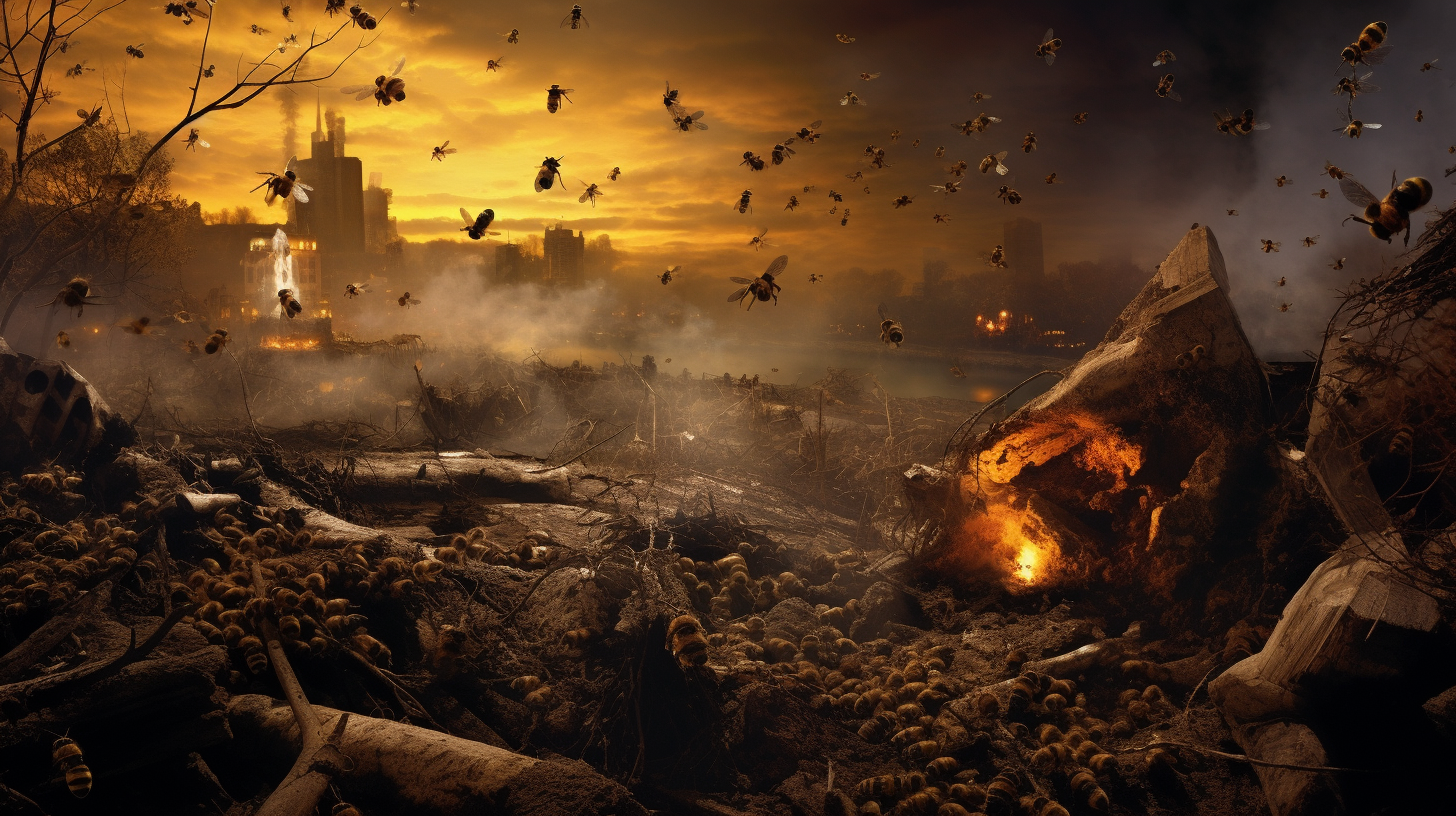The dirge of the once bustling meadows now plays out under a solemn sky, as the air that was once rich with the symphony of buzzing bees falls eerily silent. The world faces an Insect Armageddon, a catastrophic decline in insect populations that has finally silenced the bees. These tiny harbingers, which have long been the sentinels of environmental health, now serve as a haunting indicator of the dire state of our world’s ecosystem.
In the wake of the desolation, scientists and environmentalists scrabble for answers amidst a sea of data. The collapse of bee populations has been linked to a concoction of factors: rampant pesticide use, habitat destruction, and climate change creating a labyrinth of chaos from which not even the most resilient species seem able to escape.
The Chain Reaction Unfolds
The absence of bees triggers a domino effect through nature’s finely balanced systems. Flowers remain unpollinated, crops fail, and humans stare down the emptiness of market stalls that once overflowed with nature’s bounty. Amidst this backdrop, tales of desperation unfold. Farmers, who once relied heavily on the silent labor of bees, are left with fallow fields and the dust of dreams where harvests should have been.
Stories of the past warn us of the perils of neglecting our pollinators, such as in ‘The Silent Spring Revisited – No Buzz, No Blooms’, which narrates the chilling absence of pollinators and the repercussions on our flora. The apocalyptic backdrop in ‘Agriculture in Ashes – When the Fields Refuse to Bloom’ gave us a glimpse into a future that we are now hurtling towards with alarming speed.
Technological Pseudo-Saviors?
Technology, ever the double-edged sword, brandishes potential solutions such as robotic pollinators and gene-editing. Yet the sterility of metal wings in a future without the organic buzz of life leaves one questioning: is this the legacy we wish to leave? While innovative strides are commendable, they cannot replace the complexity and synergy of nature’s design.
The bees, through their absence, tell us of a world that is gasping for a remedy, a stark reminder that humans do not stand separate from nature; we are a part of its intricate web. They were once the background noise of our planet, the tiny workers that connected the life cycle of plants to the sustenance of an entire species—ours.
From Despair, A Call to Arms
Amidst despair, there is a rustle of movement, a whisper of change catching on the wind. Communities band together like bees in a hive, honing in on ancient practices alongside innovative agricultural techniques. Initiatives aimed at rewilding offer a glimmer of our primal knowledge—nature’s way is the path to salvation. Yet, the irony is not lost that within this dystopian present, such concepts are but the memories of a time when bees were the stewards of biodiversity, not the relics of a crumbling fauna.
A world without the humble bee, a sight once thought unimaginable, looms before us, a testimony to our collective hubris. The tapestry of life requires all its threads, and as the bees vanish, the fabric unravels, signaling an unspoken question of what other sorrows lie ahead.
This armageddon is not of biblical proportions but of ecological reality. It is the silent testament of a world too stubborn to heed the warnings of those like Greta, whose prophecies were once dismissed with the wave of a hand. Yet therein lies the rub. In the silence of the bees, the noise of humanity’s folly becomes deafening.
There is still time to grasp the magnitude of what silence truly means—a chance to turn the mournful dirge into a battle cry for redemption. It is time to listen to the silence because it speaks volumes. It is time to act, albeit in a world that looks indifferently upon the brink of desolation.
